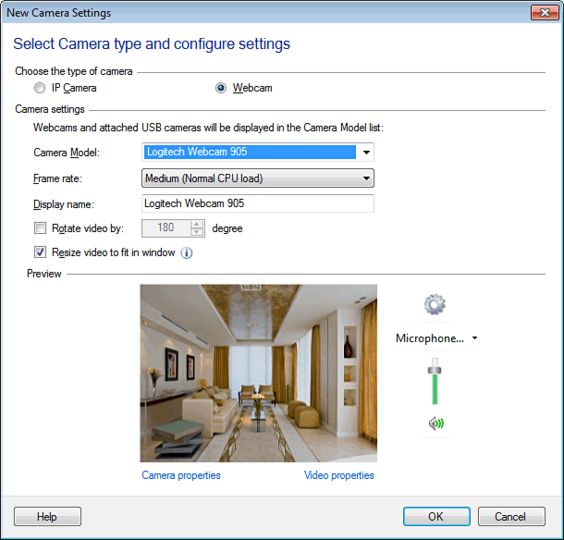
If you are using more than one then you need to change this but otherwise I would leave it alone. By default the port number should be set to 80. This is specified from within the camera’s web interface in the settings page. Make note of this as you will need it later. In the command window you will also see the subnet mask.

Whichever is the correct IP address should bring up your routers web page. If you find more than one and cannot decide which one is correct, try entering the IP address into a web browser. It should be something similar to 192.168.0.1. Once you have the right area, look for the default gateway. If you are using a wireless connection between your computer and router look for “Ethernet adaptor local Wireless connection” if you are connected by a wire then look for “Ethernet adaptor local area connection”. The computer will then churn out your network information for your computer.
#Android ip camera viewer example windows#
The Windows command window should now appear. In Windows Vista and Windows 7, click the Windows icon and in the search box enter “cmd” and press enter. In the box that opens, enter “cmd” and click “OK”. To access this information in Windows XP, go to the Start menu and click on “Run”. Internal IP address of your router and subnet mask In order to set up port forwarding you will need to gather some network information, namely the IP address of your camera, internal IP address of your router, external IP address of your router and the port number to be used. Port forwarding (sometimes called port mapping or virtual servers) is the method which tells your router that you want to allow access from the internet to a device on your network without allowing access to other devices. This keeps your computer and local devices safe from attack by hackers but also means that you can’t connect to your camera. Routers contain a firewall which prevents anyone using the internet from accessing your local network. However the same is not true in the opposite direction. There are no restrictions on outgoing data unless you set them within your router. All devices will then gain access to the internet through the router. Most people will connect their IP camera to a standard Ethernet router alongside other computers and network devices.

The process is actually very simple but does require some explanation.

However, the act of setting up remote access can often be very confusing for non-technical users and can lead to difficulty. The ability to monitor a location remotely is a huge benefit for most and is often the main reason for selecting an IP camera. Remote access is often a key factor when choosing a security camera.
#Android ip camera viewer example how to#
How to set up remote access for IP cameras


 0 kommentar(er)
0 kommentar(er)
